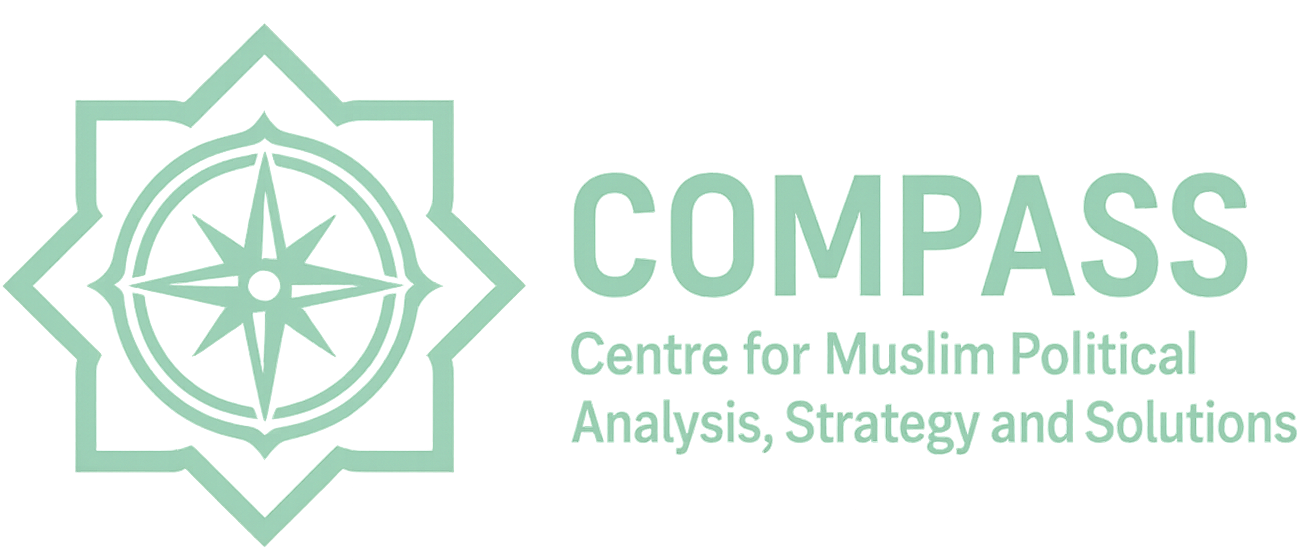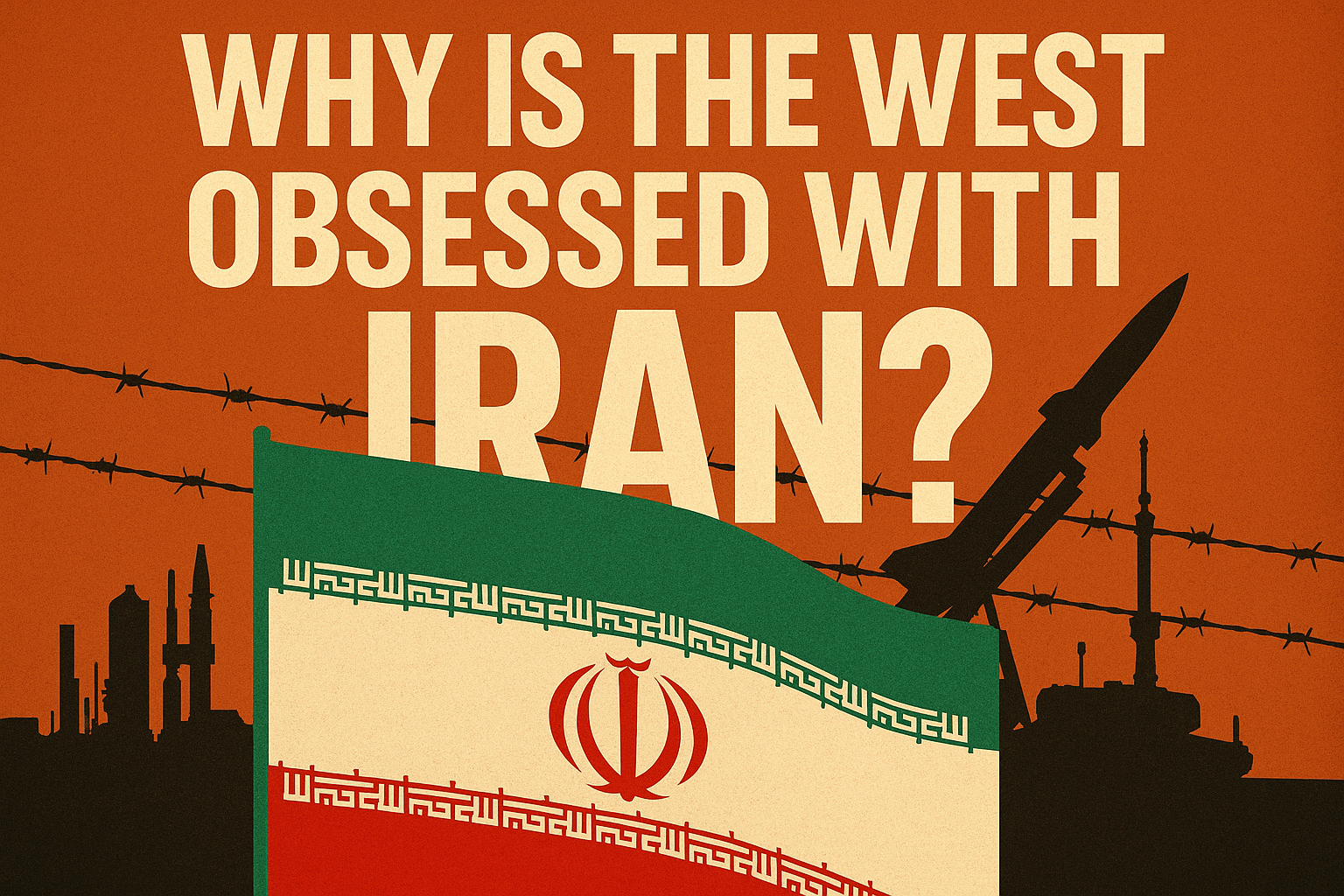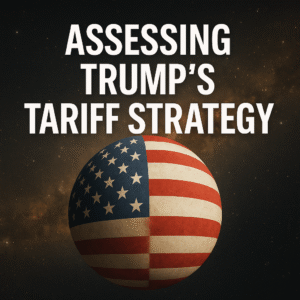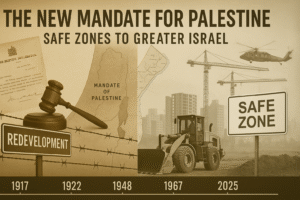The Western fixation on Iran can only be understood through a historical lens, stretching back over a century of geopolitical intrigue. From the age of colonial empires to the modern era of sanctions and proxy conflicts, Iran has persistently defied Western plans for domination. This defiance – rooted in Iran’s unique history of resisting partition, foreign puppetry, and subjugation – has made the country a perennial thorn in the side of Western powers. In this opinion piece, we explore how Iran became the only truly independent nation in the Middle East and why that status fuels relentless Western obsession, backed by historical facts and context.
Colonial Carve-Up: A Plan That Never Fully Succeeded
At the dawn of the 20th century, European empires viewed Persia (Iran) with the same covetous eyes they cast on the rest of the Middle East. Britain and Russia, after decades of rivalry in the “Great Game,” struck the Anglo-Russian Convention of 1907, effectively dividing Iran into informal zones of influence – Russia dominating the north, Britain the south. This understanding prefigured later wartime plans to partition the region. During World War I, Britain and France secretly negotiated the Sykes–Picot Agreement of 1916, scheming to split the Ottoman lands for themselves. Notably, France was initially slated to receive much of Mesopotamia (modern Iraq) – including the oil-rich Mosul region – while Britain focused on Palestine and southern Iraq. Crucially, these arrangements assumed Russia would take control of northern Persia (Iran) as part of the Allied victory.
However, history took a sharp turn in 1917. The Bolshevik Revolution pulled Russia out of World War I and into internal upheaval, abruptly voiding St. Petersburg’s imperial ambitions. Suddenly, Britain found itself without its northern partner in Persia. London attempted to fill the void by making Iran a protectorate in all but name – offering a 1919 agreement for British financial and military “aid” that would have cemented British control. Iran’s parliament (Majles) flatly rejected this deal as a violation of sovereignty. By 1921, facing Iranian resistance and growing international pressure, Britain abandoned its direct influence scheme and withdrew its military advisors. In effect, the grand colonial plan to split or subdue Iran unravelled, sparing Iran the fate that befell many Arab lands under Sykes–Picot. While the neighbouring Arab world was carved into artificial statelets ruled by European-installed monarchs, Iran remained intact – a nation not partitioned, not colonized, and not under a foreign mandate.
Importantly, Britain’s change of heart in Mesopotamia was driven by oil. Once it became clear that France’s zone under Sykes–Picot might deprive Britain of access to petroleum, London hurried to reclaim Iraq. In the war’s final days, British forces rushed to occupy Mosul (ahead of the French), and at the 1920 San Remo Conference the agreement was revised: Britain secured Iraq (including Mosul’s oil), compensating France with a share of future oil profits. Britain’s lust for oil ensured it held onto both Iraq and the Anglo-Persian Oil Company in southwestern Iran. But the northern half of Iran – once promised to Russia – was now truly independent, and the southern half, while economically penetrated by Britain, was never formally annexed. This half-finished colonial carve-up left Iran more unified and sovereign than its Arab neighbours, who endured outright colonial rule or mandate status after WWI.
The One That Got Away: Iran’s Unruly Monarchy
Though spared colonization, Iran was not free from Western meddling. Frustrated in 1919, Britain tried subtler means to secure its interests. In 1921, a Persian Cossack Brigade officer, Reza Khan, seized power in a coup with tacit British support. British diplomats saw Reza Khan as a strongman who could stabilize Iran and safeguard British strategic concerns without formal occupation. Reza Khan soon made himself shah (founding the Pahlavi dynasty as Reza Shah) and indeed pursued modernization and centralization – akin to the Western-aligned monarchies Britain propped up elsewhere in the Middle East. Unlike those Arab monarchies, however, Reza Shah’s rule rested on an independent Iranian state whose borders the West had not redrawn. Nationalist sentiment remained potent, and the new shah’s reliance on foreign support made his position tenuous. Iran had tasted constitutionalism and foreign domination in earlier years, and many Iranians remained deeply suspicious of British influence at court.
World War II proved how shaky the Pahlavi monarchy’s foundations were. Reza Shah tilted toward Germany, leading Britain and the Soviet Union to jointly invade Iran in 1941. They forced Reza Shah’s abdication and installed his young son, Mohammad Reza Pahlavi, on the Peacock Throne – effectively ensuring Iran’s king would be compliant during the war. Yet even under Mohammad Reza Shah, Iranian nationalism simmered. In 1951 democracy asserted itself when the elected prime minister, Mohammad Mossadegh, moved to nationalize Iran’s British-controlled oil industry. This bold assertion of economic independence was met with covert fury in London and Washington. In 1953, Western intelligence struck back with Operation Ajax – a CIA- and MI6-backed coup that removed Mossadegh from power and restored the Shah’s autocratic rule. The Shah resumed absolute control, aligning closely with U.S. and British interests while cracking down on dissent.
The 1953 coup was a watershed in Iranian-Western relations. It demonstrated the lengths to which the West would go to keep Iran from straying out of its orbit. For the next 25 years, Mohammad Reza Shah’s Iran was a pillar of U.S. policy in the Middle East – a bulwark against Soviet influence and a reliable source of oil. But this apparent success in controlling Iran’s leadership masked a deeper failure: the West had not won Iranian hearts and minds. The heavy-handed royal dictatorship (backed by SAVAK police and U.S. advisors) only deepened popular resentment. As Britannica notes, the 1953 coup “sowed the seeds” for Iran’s Islamic Revolution in 1979, in which the Shah was overthrown and fled into exile.
1979: Revolution and True Independence
The Iranian Revolution of 1979 ended 2,500 years of monarchy and – more importantly for this discussion – decisively severed Iran from Western domination. Ayatollah Ruhollah Khomeini and his revolutionary coalition established an Islamic Republic that was explicitly anti-imperialist and independent in its orientation. The new Iranian government expelled U.S. military advisors, cut off the cozy relationships with Western governments and corporations, and asserted sovereign control over Iran’s resources and destiny. In the eyes of Western capitals, Iran had “gone rogue.” Here was a major Middle Eastern nation that refused to act as a client state or follow the West’s geopolitical script.
Not since the era of Gamal Abdel Nasser in Egypt (1950s–60s) had a populous, strategic country in the region so openly defied Western hegemony – and unlike Egypt, Iran’s defiance proved far more enduring. Tehran’s support for Palestinian causes and hostility to Israel, its staunch opposition to U.S. military presence in the Persian Gulf, and its promotion of an Islamic political model all directly challenged Western interests. From 1979 onward, Western powers (especially the United States) have been almost obsessively focused on undermining and isolating Iran’s revolutionary government. In Washington’s strategic calculus, Iran had to be either brought to heel or neutralized, lest other Muslim nations get ideas about charting independent courses.
Western antagonism began almost immediately. The U.S. cut diplomatic ties and imposed sanctions after revolutionary students seized the American embassy in Tehran in late 1979. In the 1980s, the U.S. tacitly supported Saddam Hussein’s Iraq in a horrific eight-year war against Iran, hoping Iraq’s invasion (1980–88) might crush the Islamic Republic. Instead, Iran fought Iraq to a standstill, rallying its population in defence of their homeland despite enormous casualties. The war only hardened Iran’s revolutionary fervour and distrust of the West (since the U.S. and Europe armed Saddam). When direct warfare failed to topple Iran, the West turned even more to economic warfare and covert actions, a pattern that continues to this day.
Sanctions and Self-Sufficiency: “Pressure” That Backfired
One of the paradoxical results of Western hostility is that Iran has become more self-reliant and internally robust than it might have been otherwise. Ever since 1979, Iran has laboured under some form of Western sanctions – trade embargoes, asset freezes, and technology bans designed to choke its economy and force political concessions. In fact, Iran was for decades the most sanctioned country on earth (only recently surpassed by Russia in 2022), illustrating the continuous nature of the West’s economic pressure. These sanctions were intended to isolate Iran and cripple its development, but Iran’s response was to double down on domestic capacity. Over 40+ years of near-constant sanctions, Iran pursued a strategy of self-sufficiency in critical sectors like food, energy, and defence.
In agriculture, for example, Tehran invested heavily in staple crops to achieve food security despite trade restrictions. By 2024, Iranian officials could announce that the country had attained self-sufficiency in wheat – a fundamental food grain. Iran’s agriculture minister noted Iran produced over 12 million tons of wheat that year, eliminating the need for imports. (To put that in perspective, Iran’s wheat harvest is now exceeding its annual demand.) This drive for food independence was not merely economic; as an Iranian wheat association president observed, “90% of food security in Iran depends on wheat self-sufficiency” – a strategic imperative when facing external sanctions. In short, Iran strove to ensure that no foreign power could starve it into submission.
Energy is another arena where Iran turned sanctions into an opportunity. Despite having the world’s fourth-largest oil reserves, Iran in earlier decades lacked refining capacity and actually imported gasoline. U.S. sanctions targeting fuel imports around 2010 sought to exploit this vulnerability. Iran’s answer was to build massive new refineries, such as the Persian Gulf Star refinery, and upgrade others. By 2019, those efforts paid off: Iran declared it had become self-sufficient in gasoline, even starting to export refined fuel. Iranian refineries now produce around 105 million litres of gasoline per day, more than domestic consumption. Once again, Western pressure inadvertently spurred Iran to reduce dependence on the West. Iran likewise expanded its petrochemical and natural gas industries under sanctions, ensuring it could meet domestic energy needs and even earn export revenue despite constraints.
The clearest case of sanction-fuelled self-reliance is Iran’s defence industry. Arms embargos cut Iran off from purchasing high-end weapons, so it began developing its own. Over decades, Iranian engineers mastered ballistic missile technology, reverse-engineered tanks and fighter jets, and more recently leapt into the cutting-edge field of drones. Today, Iran produces a vast array of indigenous weapons – from anti-tank guided missiles to long-range ballistic missiles – and has even become an exporter of military drones. (Iranian-made Shahed drones have been in the headlines as Russia deploys them in the Ukraine war, underscoring their effectiveness.) Far from being a primitive arsenal, Iran’s inventory now includes precision-guided ballistic missiles and stealthy drones that rival those of advanced militaries. In January 2025, for instance, Iran’s army took delivery of 1,000 new domestically-produced drones with ranges over 2,000 km – a striking testament to its independent military capability.
Western observers grudgingly acknowledge Iran’s self-sufficiency in arms, even prior to the recent 12-day war. During a prior exchange with Israel, analysts noted Iran could launch large drone and missile salvos without outside support, sustaining operations that would exhaust many other countries. In one retaliatory strike in 2020, Iran fired 16 ballistic missiles at a U.S. base in Iraq – the largest ballistic missile attack ever on American forces – injuring over 100 U.S. personnel with concussive blasts. The precision and scale of that strike shocked military planners: it proved Iran’s missiles could precisely hit targets hundreds of miles away, greatly complicating any U.S. war plans. Likewise, a 2019 drone-missile attack on Saudi Arabia’s Abqaiq oil facility (widely attributed to Iran) temporarily knocked out half of Saudi oil production in one blow. These feats of engineering and coordination underscore that decades of sanctions have not neutered Iran – instead, Iran has emerged more technologically resilient and militarily confident. Indeed, as journalist Thomas Friedman remarked after the Abqaiq attack, every country in the region (even U.S. allies) had to “recalculate” its security because Iranian capabilities were now undeniable.
The Thorn in Washington and Tel Aviv’s Side
Iran’s independence – political, economic, and military – directly challenges the model of Middle East order that the United States (and its close ally Israel) have tried to maintain. U.S. and Israeli policy in the region have long been premised on having compliant Muslim regimes in power: whether kings, generals, or presidents, they were expected to align with Western strategic interests. This often meant suppressing popular sentiments for the sake of stability and Western-friendly policies (for example, making peace with Israel or hosting American troops, even if unpopular domestically). Saudi Arabia, Jordan, Egypt, the smaller Gulf states – all, in different ways, have fallen in line with Western agendas or at least refrained from serious opposition. Iran, however, represents the opposite: a large, resource-rich, populous nation that openly defies U.S. dictates and refuses to recognize Israel. From Washington’s perspective, Iran’s revolutionary regime is an intolerable affront precisely because it is not a vassal or client.
This explains why “regime change” in Tehran has been an explicit or implicit goal of Western policy for decades. American officials have often openly talked of supporting Iranian opposition groups or covert action to destabilize the government. Israel, for its part, views Iran as its arch-enemy – not only due to rhetoric (Iran’s leaders have condemned Zionism) but because Iran actively backs groups resisting Israel (such as Hezbollah in Lebanon and, more recently, various Palestinian factions). Israel’s leaders have made no secret that they ultimately seek the downfall of Iran’s current government. As one 2025 analysis put it, Israel’s real aim in confronting Iran is regime change in Tehran – an objective that “suits the West just fine”. Under the pretext of stopping Iran’s nuclear program, Israel has for years conducted assassinations, sabotage, and airstrikes against Iranian targets, hoping to weaken the regime. Western powers have mostly cheered this on, sharing the desire to see a more pliant government in Iran. The fixation on Iran’s nuclear activities – while certainly about non-proliferation – also serves as a convenient international rallying point to justify sanctioning and isolating Iran, with the unspoken hope that sufficient pressure might trigger internal collapse or a more Western-friendly shift in Tehran.
Yet Iran has so far weathered these storms. Despite being isolated diplomatically, Iran leveraged ties with non-Western powers (Russia, China) and built a network of regional allies and proxies to extend its influence. In a sense, Western obsession with containing Iran has been matched by Iran’s own obsession with maintaining its sovereignty and resisting outside domination. Tehran’s hardliners often frame their struggle as a continuation of Iran’s long fight against imperialism – recalling how Iran avoided being colonized, how it kicked out a Western-installed monarch, and how it endures under sanctions without surrender. This narrative resonates with many in the Middle East who see Iran as one of the few nations standing up to Western bullying. It is telling that, in recent years, some of America’s traditional Arab partners have started hedging their bets: seeing that Iran could not be cowed, Gulf states like the UAE and Saudi Arabia have opened diplomatic talks with Tehran to calm tensions. The very persistence of Iran’s regime and its growing military prowess have forced the region to reconsider the balance of power.
Meanwhile, in Western policy circles, Iran’s defiance is often cited as a major threat to the “rules-based order” in the Middle East. What this really means is that Iran is a threat to Western dominance of the Middle East. An independent Iran serves as a powerful example that a country can reject U.S. hegemony and still survive – even develop in some areas. This is a dangerous example, from the viewpoint of Washington or Tel Aviv, because it undermines the fear-based compliance they expect from other states. As long as Iran remains revolutionary and sovereign, it will inspire resistance (or at least reluctance) among other nations to fully toe the Western line. Thus, the West’s obsession is partly driven by fear of Iran’s influence: not just its weapons, but its influence as a model of independence. Indeed, U.S. officials often speak of Iran as “exporting instability” – a reference to its support for militant groups, but also implicitly to the spread of an anti-Western mindset.
On a more immediate level, Iran has proven capable of taking on the West militarily, which further exacerbates Western anxiety. We have seen Iranian missiles strike U.S. bases directly, Iranian drones harassing Western navies in the Persian Gulf, and Iranian-supplied rockets raining on Israeli positions via proxy militias. Iran has developed the means to impose costs on any country that attacks it, making a full-scale Western assault far riskier and more complicated. Military analysts note that any U.S. or Israeli war plan against Iran must contend with Iran’s capacity for retaliation across the region. This effective deterrence is galling for hawks in Washington and Israel who once envisioned a quick decapitation strike or regime implosion. Instead, Iran has achieved a kind of stalemate: the West cannot eliminate Iran’s regime without a prohibitively high price. The frustration of this reality only feeds the obsession further – witness the frequent bellicose rhetoric, the endless rounds of sanctions (despite their limited success), and the near paranoia about Iran’s every move in places like Iraq, Syria, or Lebanon.
Conclusion: The Cost of Defiance
In summary, Iran is the Middle East’s great paradox from a Western perspective. It is a nation that, by all colonial precedents, should have been subdued and clientized in the 20th century – yet it avoided partition, overthrew a Western-backed king, and has stood proud as an independent (if frequently vilified) republic for over four decades. Iran’s refusal to bend the knee has made it an obsession for the West because it defies the established order of a Western-dominated Middle East. The historical record shows a pattern: when Iran could not be split between empires, the West installed a friendly shah; when Iranians reclaimed their oil and their sovereignty, the West orchestrated a coup; when Iranians revolted in 1979, the West backed a devastating war and, failing that, turned to permanent sanctions and isolation.
Yet the same record also shows Iran’s remarkable resilience. Every wave of Western pressure has only reinforced Iran’s resolve to chart its own course. In practical terms, Iran today is more self-sufficient in food, fuel, and armaments than many U.S.-aligned countries in the region. It hosts no foreign military bases on its soil (almost unique in the Middle East), and its foreign policy is not dictated by any outside capital. This genuinely independent stance – won at great cost – is a source of national pride for many Iranians. It also means that the West’s original sin, in their eyes, is Iran’s unforgivable virtue: independence.
So, why is the West obsessed with Iran? Because Iran represents what the West tried to prevent in the Middle East: a powerful, self-determined Muslim nation that does not answer to Washington, London, or any other external authority. Iran’s existence in this form is a rebuke to the colonial logic of Sykes–Picot and a challenge to American hegemony in the 21st century. Until or unless Iran’s political character changes to something more compliant, we can expect this obsession to continue. As history has shown, however, attempting to dominate or dismantle Iran has only made it stronger and more defiant. In the end, Iran’s case illustrates a broader lesson: a nation’s resolve to be free can outlast even the most determined campaigns against it – much to the West’s frustration, and, arguably, to its own detriment in pursuing an endlessly hostile policy.
Sources:
- Britannica – Iran: World War I and the Rise of Reza Khan
- Britannica – 1953 Coup in Iran
- Global Policy Forum: “Great Power Conflict over Iraqi Oil: World War I Era”
- Press TV – Wheat Self-Sufficiency in Iran; Iran Daily
- Reuters – Iran oil product exports and gasoline self-sufficiency
- Channel News Asia – Iran’s domestically produced drones (2025)
- Responsible Statecraft – Iran’s 2020 missile attack on U.S. base
- The Independent (Sam Kiley) – Israel’s aim of regime change in Iran (2025)
- Wikipedia – International sanctions against Iran



